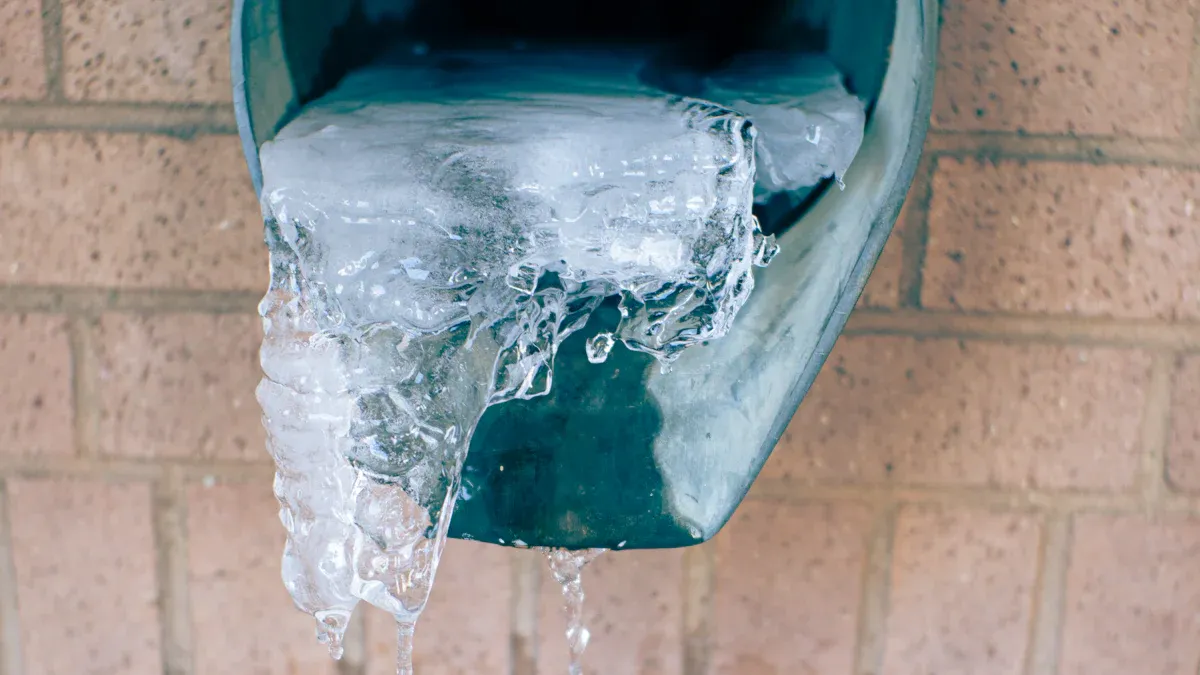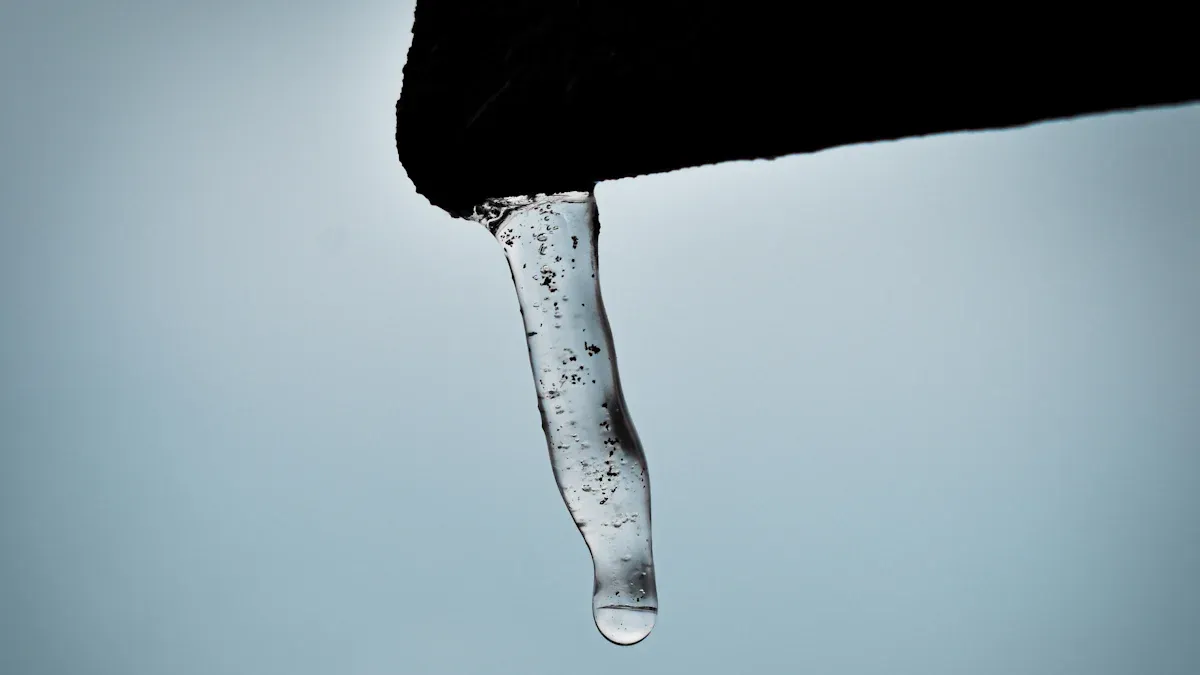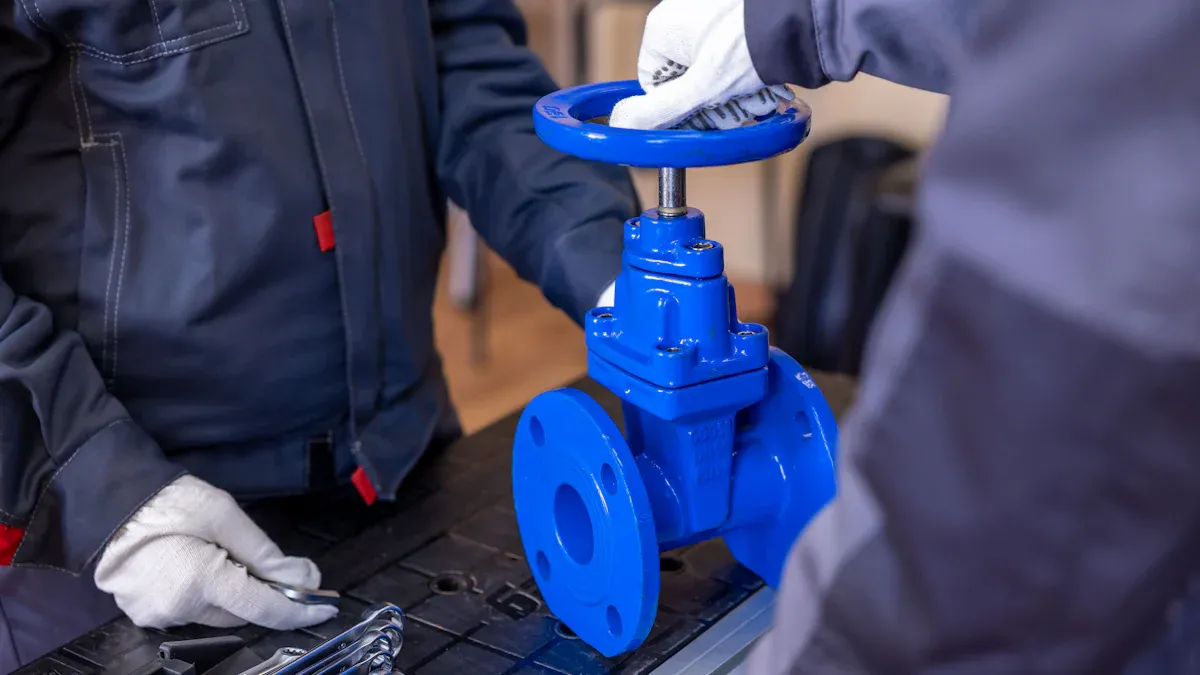
Nordic engineers design sliding fittings to withstand intense freeze-thaw cycles at -40°C. These specialised components allow pipes to expand and contract safely. Advanced materials prevent leaks and structural failures. Water systems in extreme cold rely on these fittings for long-term reliability and cost savings.
Key Takeaways
- Sliding fittings use flexible materials that let pipes expand and contract safely, preventing cracks and leaks in freezing conditions.
- Nordic engineered fittings combine smart design and advanced materials to resist extreme cold, corrosion, and chemical damage, ensuring long-lasting water systems.
- These fittings reduce maintenance costs and failures by creating secure, leak-resistant connections that perform reliably through many freeze-thaw cycles.
Sliding Fittings and the Freeze-Thaw Challenge

Understanding Freeze-Thaw Cycles at -40°C
Nordic winters bring repeated freeze-thaw cycles, with temperatures dropping as low as -40°C. These cycles cause water in soil and pipes to freeze, expand, and then thaw, leading to mechanical stress. Studies in Norway show that freezing at -15°C for a day, followed by thawing at 9°C, weakens soil structure and increases erosion risk. X-ray tomography reveals that repeated cycles reduce the size and number of soil pores, making water transport harder and raising the chance of runoff. These harsh conditions challenge the stability of water systems and the land around them.
Impact on Water Systems and the Need for Specialised Solutions
Water systems in extreme cold face several problems:
- Pipes can burst when water inside freezes and expands.
- Concrete structures develop cracks and lose strength.
- Foundations shift or crack as soil expands and contracts.
- Roofs and gutters suffer from ice dams, causing leaks.
- Moisture from burst pipes damages building interiors.
Engineers use several solutions to prevent these issues:
- Heating blankets and wraps keep pipes warm.
- Electrical heat trace systems provide steady heat.
- Valve heaters protect exposed parts.
- Draining pipelines and using anti-freeze valves stop ice from forming.
These methods focus on preventing freezing and reducing repair costs.
What Sets Sliding Fittings Apart
Sliding fittings stand out because they allow pipes to move as temperatures change. Unlike traditional copper or PVC fittings, sliding fittings made from flexible materials like PEX expand and contract with the pipe. This flexibility lowers the risk of burst pipes and reduces leak points. Fewer connections mean less chance of failure. Sliding fittings also resist common problems such as crack growth and chemical attack, which often cause traditional fittings to fail in cold climates.
Nordic Engineered Sliding Fittings: Performance and Advantages

Engineering for Extreme Cold: Materials and Design Features
Nordic engineers select advanced materials for sliding fittings to ensure performance in harsh winter conditions. Polyphenylsulfone (PPSU) and cross-linked polyethylene (PEX) are common choices. PPSU resists cracking and chemical attack, even at temperatures below -40°C. PEX offers flexibility, allowing pipes and fittings to move together during expansion and contraction. These materials do not become brittle in extreme cold, which prevents sudden failures.
Design features also play a key role. Sliding fittings use a sleeve or collar that moves along the pipe. This design absorbs movement caused by temperature changes. The fittings create a tight seal, which prevents leaks even when pipes shift. Engineers reduce the number of joints in the system, which lowers the risk of leaks and makes installation easier.
Note: The combination of flexible materials and smart design allows sliding fittings to outperform traditional metal or rigid plastic fittings in Nordic climates.
Mechanisms of Freeze-Thaw Defence
Sliding fittings protect water systems from freeze-thaw damage by allowing controlled movement. When water freezes, it expands and puts pressure on pipes. Traditional fittings can crack or break under this stress. Sliding fittings move with the pipe, absorbing the force and preventing damage.
The fittings also resist corrosion and chemical attack. This resistance is important because road salts and other chemicals often enter water systems during winter. The secure, leak-resistant connections prevent water from escaping, which reduces the risk of ice forming inside walls or foundations.
A simple installation process further strengthens freeze-thaw defence. Fewer joints mean fewer weak points. The system remains strong, even after many freeze-thaw cycles.
Durability, Reliability, and Cost-Effectiveness in Harsh Climates
Water systems in Nordic regions demand fittings that last. Sliding fittings meet this need by offering:
- High durability against freezing, corrosion, and chemical damage.
- Fewer repairs and replacements over time.
- Lower maintenance costs compared to conventional fittings.
- Secure, leak-resistant connections that minimise water damage.
- Simple installation, which reduces labour and material costs.
| Feature | Sliding Fittings | Conventional Fittings |
|---|---|---|
| Freeze Resistance | High | Moderate |
| Corrosion Resistance | High | Low |
| Maintenance Frequency | Low | High |
| Installation Ease | Simple | Complex |
| Cost-Effectiveness | High | Moderate |
These advantages make sliding fittings a smart investment for water systems exposed to extreme cold.
Real-World Applications and Case Studies
Engineers have tested sliding fittings in some of the world’s harshest environments. Several case studies highlight their effectiveness:
- PPSU sliding fittings performed well in aerospace fuel systems at -60°C, showing durability and flexibility.
- Medical cryogenic storage used PPSU fittings below -80°C, maintaining strength and safety for biological samples.
- Industrial refrigeration systems with ammonia operated reliably with PPSU fittings, improving energy efficiency and reducing maintenance.
- Oil and gas companies used PPSU fittings in subsea equipment, where they withstood freezing temperatures and harsh chemicals.
These examples show that sliding fittings work not only in water systems but also in demanding industrial and scientific settings. Their proven track record in extreme cold makes them a trusted choice for Nordic water infrastructure.
Nordic engineered fittings deliver unmatched protection and value in extreme cold. Municipalities in Canada report fewer failures and lower maintenance costs due to flexible materials. In Japan and Asia Pacific, engineers increasingly choose flexible, corrosion-resistant pipes for cold climates. These trends highlight the essential role of advanced fittings in safeguarding water systems.
FAQ
What makes sliding fittings suitable for extreme cold?
Sliding fittings use flexible materials. These materials allow pipes to move during temperature changes. This design prevents cracks and leaks in freezing conditions.
Can sliding fittings be installed in existing water systems?
Yes. Engineers can retrofit sliding fittings into most existing systems. The process requires minimal tools and causes little disruption to water supply.
How do sliding fittings reduce maintenance costs?
Sliding fittings resist corrosion and leaks. Fewer repairs and replacements are needed. Water systems stay reliable for longer periods.
Post time: Jul-22-2025
